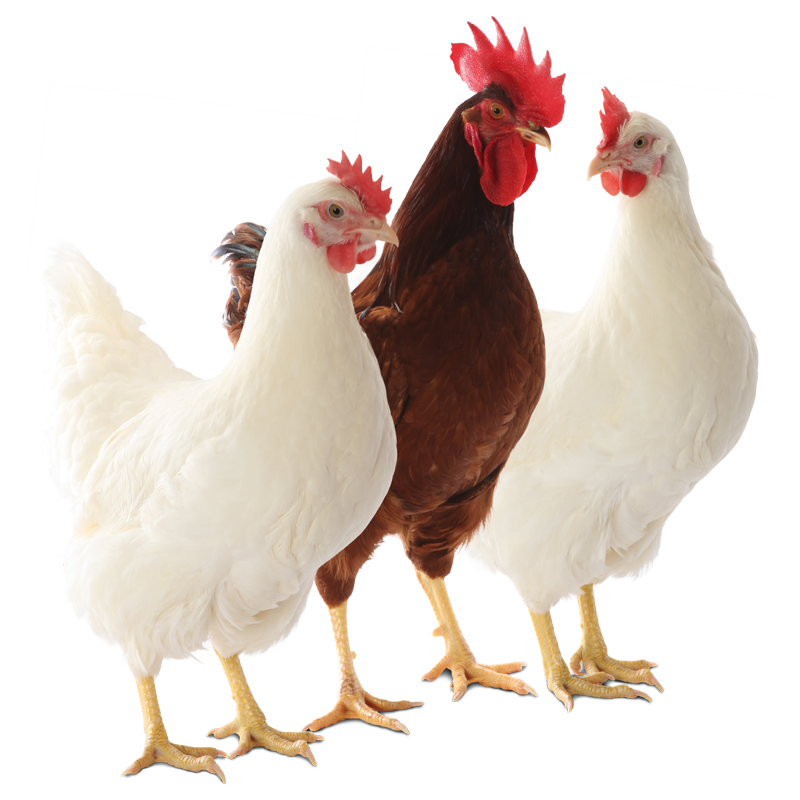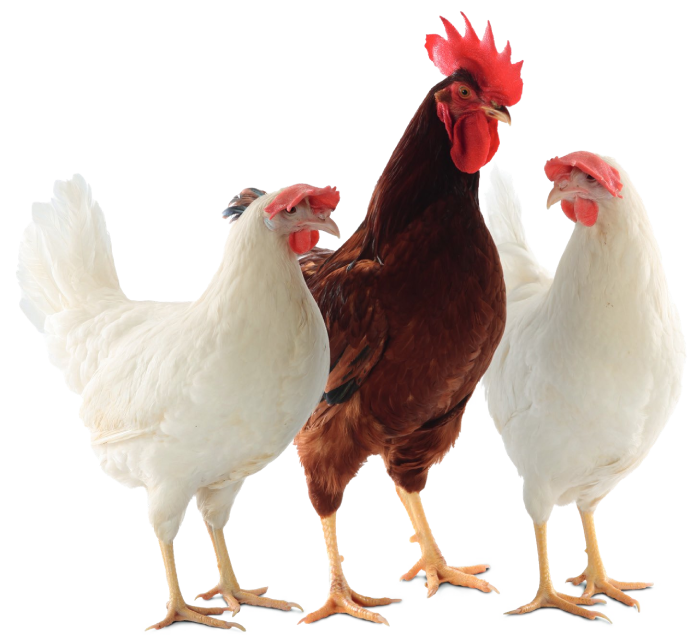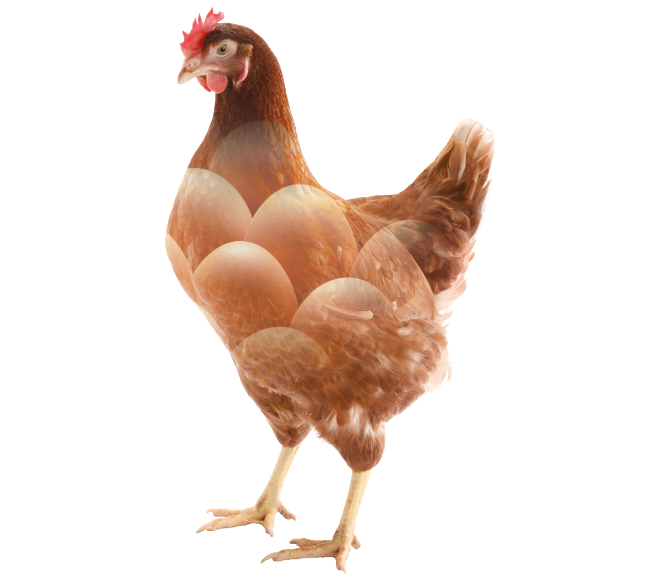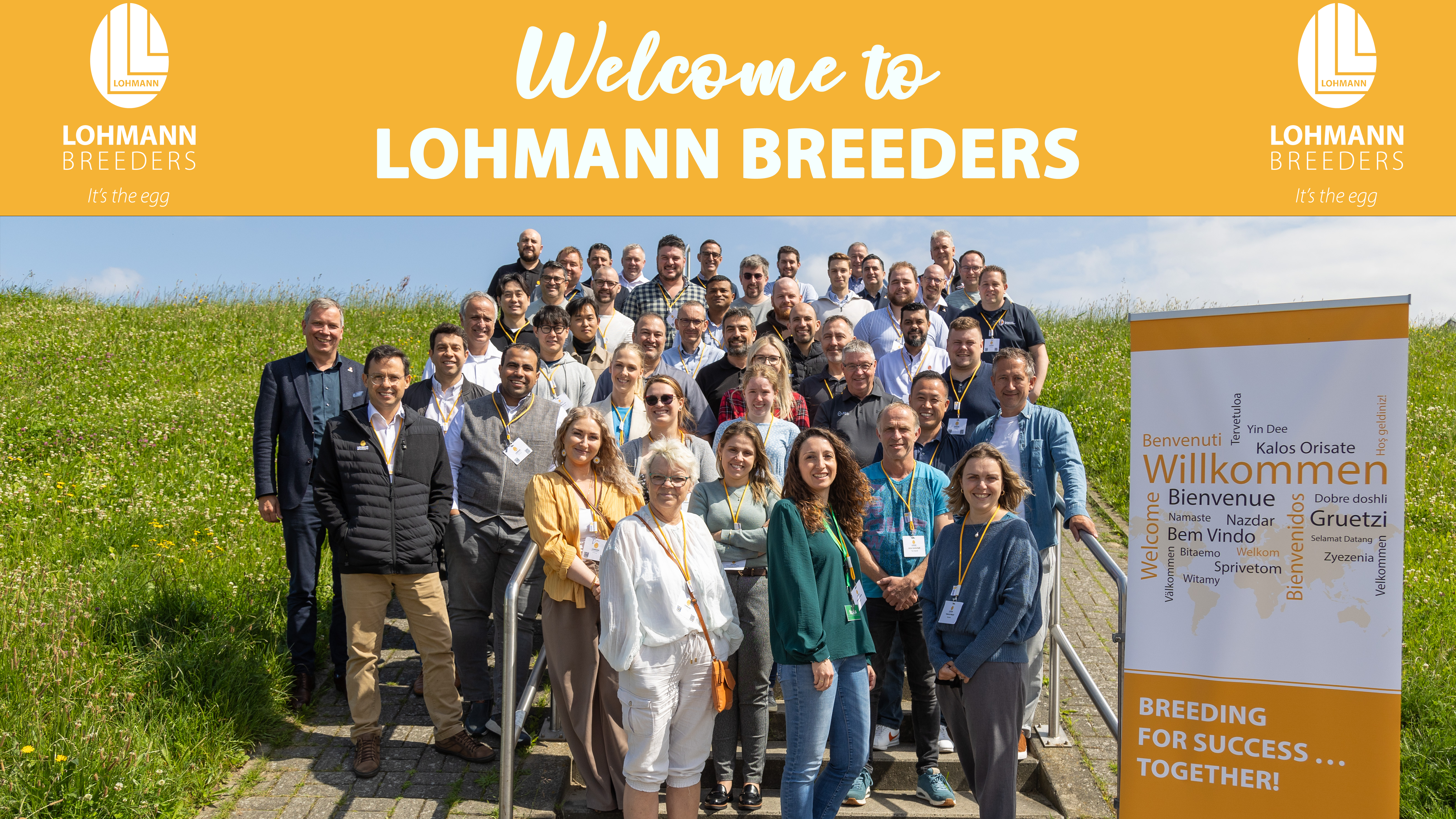Summary
A commonly recognized problem of modern dairy farms is that the extremely high milk production
often leads to a shorter productive life so that it becomes difficult to maintain the herd size from own
replacement heifers. The herd management of a dairy farmer in Germany is described as a case
study to show that competitive family income can be achieved by focusing on a combination of high
milk yield, longevity and health of the cows instead of on maximum milk production at the expense
of other equally important traits. The practical experience of the owner family, focus on wellbeing of
the herd and health care for individual cows, a nutrition program designed for high intake of roughage
and continuous checking in the cow barn while the cows use the milking robot are seen as essential
factors in this successful dairy operation.

Introduction
In 2011, 4.19 million dairy cows produced 10.148 billion Euro worth of milk, which accounted for 43.3% of income from farm animals and 19.4% of total farm income in Germany (ADR 2012).Milk yield per lactation across all breeds was about 7,000 kg and total annual milk production was about 28 million tons, which covers the domestic demand and reflects the importance of milk and milk products for human nutrition in Germany.
To keep up with national and international competition, milk production per lactation has been increased from 3,500 kg in 1970 to 7,000 kg in 2011 (ADR 2012). This increase is due to improved genetic selection, combined with adapted nutrition and health service, and is no doubt a success story of modern agriculture.
High lactation yield is only one essential component of successful milk production, the economics of dairy farming also depends on longevity of the cows.
The average productive life time has declined from about 3.5 in 1970 to currently between 2.5 and 3.0 lactations, in opposite direction of the increasing milk yield. That means many cows leave the herd already after 2-3 calvings, before reaching the maximum of their production capacity. Swalve (2012) reported first indications of a reversing trend.
The high annual replacement rates show significant regional and farm-to-farm variation. Depletions are already high during the first lactation. Bergk and Swalve (2011) reported 10.7% losses during the first 300 days p.p. and 20.9% by 450 days after first calving.
Similar results were found by Münch und Richter (2012) who analyzed the reasons for culling 25% of first lactation cows in Baden-Württemberg. Infertility was the most frequent cause (20.9%), followed by mastitis (14.3%) and lameness (11.0%).
We do not have reliable statistics for deaths of dairy cattle in Germany, but they should be included in our assessment of the situation. Research in the USA indicates an increasing rate of mortality (> 5 %), which appears to be positively correlated with milk yield (Miller et al., 2008, Alvåsen et al., 2012). Taking also the mortality of calves into account, which is sometimes be quite high (> 15 %), it may become difficult to replace the own herd.
The problem of short utilization and high rates of culling has been critically reviewed by Rauw et al. (1998) and Berry et al. (2007). Causal relationships were studied in more detail by Ingvartsen (2006) and Mulligan und Doherty (2008); Martens (2007) focused on the impact of metabolic stress for high yielding cows.
An important conclusion from these analyses is the great variation of observations under identical conditions and with the same level of production (Ingvartsen et al., 2003), i.e. the numerical results are correct, but they ignore the positive exceptions.
As we all know, some high producing cows or whole herds are remarkably healthy and are kept for many lactations. This is illustrated in the recent publication by Iwersen (2011).
The frequency of diseases during the first 70 days p.p. was registered in a high yielding herd (258 cows averaging 11,049 kg/ lactation). Exactly 2/3 of the cows had a problem, 1/3 had no health problems. Understanding what enabled the healthy third of the herd to sustain high production during a longer productive life may tell us at least as much as analyzing the pathogenesis of the diverse peripartal diseases and causes of mortality. Hence, our current description of the management of a herd with high milk production and longevity may offer other dairy farmers useful ideas how to improve their results.
Dairy Farm Soonwald in Seibersbach
General information: Soonwald Dairy Farm is a family farm owned by the Bange family since 60 years, who keep 145 head of cows and a corresponding herd of about 140 heifers. The herd includes red and black German Holsteins. They farm 140 hectares arable land, of which 50 ha are owned and 90 ha are leased.95 ha are used as pasture and 45 ha to grow crops, 50% of which to produce feed for the cattle. The work force consists of husband and wife of the owner family, one full-time employee and one trainee.
Performance parameters: The current herd of 145 cows was built up gradually from own progeny and is intended to be increased to 150-155 cows in the near future. The average lactation yield peaked at 11,000 kg in 2002 and was reduced to 9,500 kg since then in order to make the herd more manageable.
Lifetime yield per cow is currently 36,000 kg milk with 4.23 % fat and 3.38 % protein. The average productive life was for many years 4.5 lactations and is currently down to 3.5 lactations, due to keeping more heifers while increasing herd size.
The average lactation curve is rather flat, with peak production 8 weeks after calving. The average length of lactations is 11-13 months, with calving intervals of 420-430 days and dry periods preferably 6-7 weeks.
The depletion rate (culling) averages about 15%. Currently all heifers are kept to increase the herd of milking cows. Cows which have produced 100,000 kg milk are usually not slaughtered but euthanized.
Sudden death is extremely rare.
Management of dry cows and calves: Dry cows are kept in two groups and moved into one of four available calving pens, with sight contact to the other cows, when they are about to start calving.
Calving is not systematically supervised, and cows are only assisted if necessary (about 90% calve without help).
The new borne calf stays with the mother for up to 12 hours before it is moved into an igloo for 2.5 weeks and finally joins other calves in a group pen. Within the first 3 hours the calves get 2-3 liters colostrum.
In case the cow does not give enough colostrum, there is always a reserve in the freezer.
Only about 4% of the calves are stillborn or die during calving. Rearing losses are not significant. Bull calves with superior pedigree are reared and sold for breeding at the age of 12-14 months. The other male calves are sold at about 2 weeks of age.
Health care: The farm has no prophylactic health care program for the herd and follows the traditional practice of calling on a veterinarian to treat individual animals which are sick. The cost for veterinary treatments averages about 80 Euro per animal per year.
This refers to common treatments. The incidence of metritis or mastitis is low. The non-return rate with farm-own AI is remarkably good, with 1.7 and 1.8 inseminations per calf born alive for first-calf heifers and older cows, respectively. The culling rate for infertility reasons is therefore very low.
Synchronization of estrus and insemination is not practiced on principle.
The claws are trimmed 3 x per year by an experienced claw trimmer. Prophylactic claw baths are not provided. Mortellaro continues to be a problem and is treated as soon as it is recognized; the same goes for other causes of lameness.
Housing and feeding: In new barn with open boxes and a milking robot was installed. The gangways are extra wide (5.2 m) to allow high ranking and low ranking cows to pass each other without any problem. The side walls are also higher than usual (5.0 m) to optimize lighting and ventilation. The resting places get new litter (short cut straw) every day and are checked twice a day (to keep it clean with a bed of straw).
The number of resting (160) and eating (200) places exceeds the number of cows significantly to make sure all cows can eat, drink (15 automatic drinkers) or rest. The milking robot is not used optimally by all cows, and 10-12% of the cows have to be driven into the system. This extra work is accepted as necessary (see below).
The feed consists of a roughage mix (table 1) and up to 5 kg added concentrate (19/IV for high producing dairy cows), allocated according to current milk production. This additive is mixed and pressed according to specifications of the dairy farmer. The allocation is based on the transponder ID of each cow while she visits the milking robot. Remarkably high is the intake of roughage, aver aging above 20 kg DM per day. The roughage mix is offered fresh once per day and kept easily accessible.
Table 1: Components and contents of the base ration
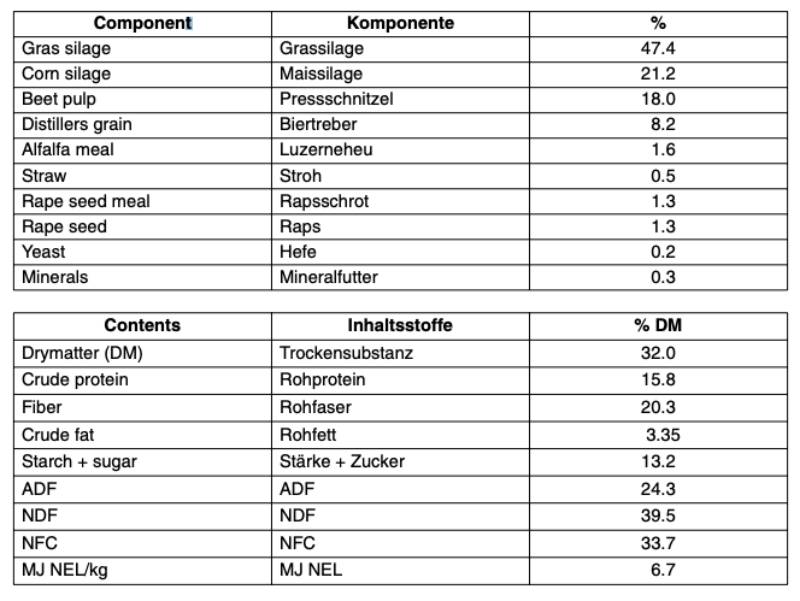
Perspectives and goals of the dairy farmer: The milk yield of this herd is https://lohmann-breeders.com/wp-admin/media-upload.php?post_id=23186&type=image&TB_iframe=1significantly above average, but not as high as on farms focused on maximum milk yield. Top milk yield had been achieved some years ago in this herd as well, but only with higher expenses. The current goal is no longer to maximize average lactation yield, but lifetime productivity. Desired is a further increase of the number lactations per cow, although the current herd average is already significantly higher than in the national cow population. In other words: not highest possible milk yield, but high milk yield in combination with consistent health and longevity. The experience on this dairy farm shows that cows with 100,000 kg milk yield lifetime performance are a realistic goal. After the herd size has been increased to 150-155 cows, it is planned to sell 35-40 first lactation heifers per year, like in previous years.
Conclusion
Economic milk production should combine high milk yield and longevity. Lactation yield has been increased significantly during the past decades, but at the expense of productive life span. This is generally recognized, but too little attention is paid to positive exceptions from the general trend like illustrated in this case study. As shown on the dairy farm of family Bange, above average milk yield can be combined with exceptional livability. The following tentative conclusions are offered:a. Experience: The family has operated this dairy farm successfully for decades and expanded gradually while improving the results from year to year. After reaching top milk yield, it was decided to reduce milk production.
b. Management of the herd and checking: The cows are handled with utmost care: separating the calf from the mother within 12 hours; wide gangways to enable cows to pass each other; straw in the resting boxes, which are serviced frequently; herding individual cows into the milking robot in case they don’t use it sufficiently. All this contributes to continuous observation and corrective action if necessary.
c. Nutrition and resting: The high intake of roughage (>20 kg DM/day) contributes significantly to the productivity of the cows. Limiting concentrates to 5 kg/day means that these cows are fed as ruminants (table 1: high fiber content, relatively low starch and sugar levels). Ample space allows the cows to choose what they like to do, wide gangways to prevent blockage by high ranking individuals.
d. Expected performance: Selection for high milk yield has resulted in higher early production and rapid increase toward peak daily milk yield. Delaying the peak to 8 weeks after calving helps to adjust feed intake (Gravert, 1985) and metabolism gradually at a time when fertility problems are frequently encountered (Harrison et al., 1990). As a consequence of more or less parallel increase of milk output and feed intake, the duration and intensity of negative energy imbalance are reduced so that NEB associated disorders like ketosis (Baird, 1982), fatty liver (Herdt, 2000; Geelen and Wensing, 2006), immunosuppression (Goff, 2006), lameness (Bicalho et al., 2009), infectious diseases (Sordillo et al., 2009) and fertility problems (Butler, 2003) are less frequent or unknown in this herd of cattle.
Without induced synchronization of estrus and planned AI, calving intervals are longer, but the preference for natural development appears to be beneficial. With lower first lactation milk yield, the heifers can invest more into a strong constitution which enables them to increase production in subsequent lactations.
Outlook: The primary goal is no longer maximum milk yield (in the first lactation), but a balanced combination of high average lifetime milk yield, longevity and health of the cows.
References
ADR (2012): Arbeitsgemeinschaft Deutscher Rinderzüchter. Rinderproduktion in Deutschland 2011. ISSN 1439-8745.ALVÅSEN, K., MÖRK, M., SANDGREN, H., THOMSEN, P. T., EMANUELSON, U. (2012): Herd-level risk factors associated with cow mortality in Swedish dairy herds. J. Dairy Sci. 95, 4352-4362.
BAIRD, G. D. (1982): Primary ketosis in high-producing dairy cow: Clinical und subclinical disorders, treatment, prevention, outlook. J. Dairy Sci. 65, 1-10.
BERRY, D., HORAN, B., DOBOVAN, M., MUCKLEY, F., KENNEDY, E., McEVOY, M., DILLON, P. (2007): Genetics of grass dry matter intake, energy balance, and digestibility in grazing Irish dairy cows. J. Dairy Sci. 90, 4835-4845.
BERGK, N., SWALVE, H. (2011): Der Fett-Eiweiß-Quotient in der Frühlaktation als Indikator für den Verbleib von Erstkalbinnen in der Milchkuhherde. Züchtungskunde 83, 89–103.
BICALHO, R., MACHADO, V., CAIXATA, L. (2009): Lameness in dairy cattle: A debilitating disease or a disease of debilitated cattle? A cross-sectional study of lameness prevalence und thickness of digital cushion. . J. Dairy Sci. 92, 3175-3185.
BUTLER, W. R. (2003) Energy balance relationships with follicular development, ovulation und fertility in postpartum dairy cows. Livestock Prod.Sci. 83, 211-218.
GEELEN, M., WENSING, T. (2006): Studies on hepatic lipidosis und coinciding health und fertility problems of high-producing dairy cows using the “Utrecht fatty liver model of dairy cows”. A review. Veterinary Quarterly 28, 90-104.
Goff, J. (2006): Major advances in our understunding of nutritional influences on bovine health. . J. Dairy Sci. 89, 1292- 1301.
HERDT, T. H. (2000): Ruminant adaptation to negative energy balance. Influences on the etiology of ketosis und fatty liver. Veterinary Clinics of North America: Food Animal Practice 16, 215-230.
MILLER, R. H., KUHN, M., NORMAN, H. D., WRIGHT, J. R. (2008): Death losses for lactating cows in herds enrolled in dairy herd improvement. J. Dairy Sci. 91, 3710-3715.
GRAVERT, H. O. (1985): Genetic factors controlling feed efficiency. Livestock Prod. Sci. 13, 87-99.
HARRISON, R. O., FORD, S. P., YOUNG, J. W., CONLEY, A. J., FREEMAN, A. E. (1990): Increased milk production versus reproductive and energy status of high producing dairy cows. J. Dairy Sci. 73, 2749-2758.
INGVARTSEN, K. L. (2006): Feeding- and management-related diseases in transition cow. Physiological adaptations around calvin and strategies to reduce feeding-related diseases. Animal Feed Science and Technology 126, 175-213.
INGVARTSEN, K. L., DEWHORST, R. J., FRIGGENS, N. C. (2003): On the relationship between lactational performance and health: is it yield or metabolic imbalance that causes production diseases in dairy cattle? A position paper. Livestock Prod. Sci. 83, 277-330.
IWERSEN, M. (2011): Einfluss von Propylenglykol als Bestandteil einer totalen Mischration während der Frühlaktation auf die Tier- und Stoffwechselgesundheit sowie auf Leistungsparameter von Milchkühen. Dissertation FU Berlin.
MULLIGAN, F.J., DOHERTY, M.I. (2008): Production diseases of the transition cow. Vet. Rec. 176, 3-9.
MARTENS, H., (2007): The Dairy Cow: Physiological Facts and Concerns. Proceedings of the 13th International Conference of Production Diseases in Farm Animals. Ed. M Fürll, Leipzig. P. 26-42 RAUW, W. M., KANIS, E., NORDHUIZEN E. N., GROMMERS, F. J. (1998): Undesirable side effects of selection for high production efficiency in farm animals: a review. Livestock Prod. Sci. 56, 15-33.
SORDILLO, I., CONTRERAS, G., AITKEN, St. (2009): Metabolic factors affecting the inflammatory response of periparturient cows. Animal Health Res. Rev. 10, 53-63 SWALVE, H. (2012): Aktueller Stand der züchterischen Verbesserung von Gesundheit und Funktionalität beim Nutztier. Züchtungskunde 84, 32–38.
Hohe Leistung und lange Nutzungsdauer von Milchkühen:
Ein Praxisbericht
Extrem hohe Milchleistung und erhöhte Abgänge wegen Unfruchtbarkeit oder anderer Ursachen in modernen Kuhherden werden in ursächlichen Zusammenhang gebracht. In dieser Fallstudie wird ein Familienbetrieb mit 145 Kühen und eigener Nachzucht beschrieben, der bewusst von maximaler Laktationsleistung auf hohe Lebensleistung in Kombination mit guter Gesundheit und Lebensdauer umgestellt hat. Als Erfolgsfaktoren werden langjährige Erfahrung, tierfreundliches Management in einem modernen Boxenlaufstall mit Melkroboter, ein spezielles Fütterungskonzept mit hohem Anteil Raufutter aus eigener Produktion, laufende Beobachtung der Tiere und kurzfristige Reaktion auf alle individuelle Gesundheitsprobleme herausgestellt.
订阅我们的新闻稿
了解所有最新行业新闻。
